By Dr. Rita Fabbri
… The "Malpighia" genus is in honor of Marcello Malpighi, a famous 17th century doctor. The fruit of the Acerola, due to its appearance, is commonly known as the "Cherry of Barbados" but inside it has segments with a slightly acidic flavor like those of an "orange, and just like an" orange the "Acerola provides a quantity high in vitamin C (ascorbic acid). More precisely, we can say that compared to fresh oranges, the fresh fruit of Acerola contains a quantity of vitamin C from 30 to 50 times higher; therefore, Acerola is one of the richest natural sources of vitamin C, with a content of ascorbic acid. superior to citrus fruits and kiwis. In the countries of origin the fruits are eaten fresh and often preserved with sugar, for example in the form of jam: it seems that the thermal process does not completely destroy the vitamin C content. Acerola extracts are commonly found in products such as chewable tablets, capsules or herbal teas.
Read also: Supplements to Strengthen Immune Defenses

Botanical name: Malpighia glabra L.
Family: Rosaceae
Parts used: Fruits
Botanical description
Acerola is a plant native to South America and the tropical zone of the Antilles. It is grown mainly in Brazil. It is a shrub or a small tree that can reach five meters in height. The ideal climate is tropical and prefers sandy or clayey soils. The leaves are reddish at first and then become dark green. The fruit of the Acerola is oval, with dimensions of 1-2 cm, an intense red color (when ripe), a sour, soft, juicy flavor, with a thin skin and a large seed inside. The fruits are picked still green: the concentration of vitamin C decreases with the ripening of the fruit. From the fruits, removed the stone, the juice is obtained which is concentrated, dried and pulverized to obtain an extract with a very high content of vitamin C; during the drying process of the fruit, vitamin C is not degraded. The concentrated extract contains up to 25% of vitamin C. The juice of this fruit is commonly marketed in Brazil (for fever and dysentery) while in Europe this is only happening in recent years.
Chemical composition
Vitamin C (after the fruit of Ferdinandian Terminalia that of Acerola is the richest in vitamin C), carotenes, tannins.
The fruits of Acerola also contain vitamins B1, B2, B3, B5, B6, provitamin A and various mineral salts including iron, calcium, phosphorus, potassium, magnesium; they contain twice as much magnesium and pantothenic acid as oranges and almost the same amount of provitamin A as carrots.
The fruits of Acerola are also very rich in bioflavonoids (sometimes renamed vitamin C2) which have a "synergistic action with vitamin C. In nature, next to ascorbic acid (vitamin C1) we find constantly associated with another factor (vitamin C2): together , these molecules form the C complex, the true substance with a vitamin action. Studies begun as early as 1926 by Bezssonoff and completed in 1977 by Gazave and Parrot, have definitively clarified that the cause of scurvy is a "double vitamin C1-C2 and that every single factor is not able by itself to exert the antiscorbutigenic action. Chemically the factor C2 is a flavonoid (pentahydroxy-3-flavanol), it occurs in nature, especially in citrus fruits, in the form of a stable compound, and is able to increase the rate of reduction of dehydroascorbic acid to ascorbic acid. Furthermore, the C2 factor also has a catalytic action, proposing itself from time to time as a donor or as a hydrogen acceptor.
Therapeutic indications
The pharmacological activity of Acerola is that characteristic of vitamin C and other antioxidant substances present in the fruit. Acerola is particularly suitable for preventing and fighting flu syndromes, colds and respiratory tract infections, as well as stimulating the immune system and being useful in all cases of asthenia, convalescence and vitamin deficiencies.
Contraindications, special warnings and appropriate precautions for use, undesirable effects
No known contraindications, no warnings required and no effects reported at recommended doses.
Since the pharmacological activity of Acerola is that characteristic of vitamin C it is necessary to give some information about it.
Vitamin C was isolated in 1933 by Charles G. King and Albert Szent-Gyorgy, respectively in lemon and paprika.
Vitamin C chemically corresponds to "L-ascorbic acid. The dextrorotatory isomer (D-ascorbic acid), on the other hand, is chemically inactive. It is the most unstable of all vitamins.
Quickly releases two hydrogen ions, oxidizing to dehydroascorbic acid; it therefore acts as a reducing or oxidizing agent and many of its properties are due to this role.
Not being synthesized by the human body, the need for vitamin C is ensured by food, especially fresh fruit and vegetables. Due to its high water solubility, vitamin C is easily absorbed in the intestinal tract of the small intestine, from where it passes directly into the blood. portal to reach the whole organism. Excess ascorbic acid is eliminated in the urine.
The daily requirement of vitamin C is about 60mg, higher doses are required during pregnancy and lactation, in senile states and in the course of infectious diseases. More precisely, the recommended levels of vitamin C (RDA Recommended Dietary Allowances) indicated by the " American Institute of Medicine are as follows:
• Infant (0-6 months): 40 mg / day
• Child (7-12 months): 50 mg / day
• Child (<4 years of age): 15 mg / day
• Child (age <9 years): 25 mg / day
• Child (age <14 years): 45 mg / day
• Male adolescent (age <18 years): 75 mg / day
• Female adolescent (age <18 years): 65 mg / day
• Man: 95 mg / day
• Woman: 75 mg / day
• Pregnancy: 85 mg / day
• Breastfeeding: 120 mg / day
Since smoking increases oxidative stress and metabolic turnover of vitamin C, the need for vitamin C in smokers should be increased by 35 mg / day compared to non-smokers (Institute of Medicine, 2000).
The need for vitamin C also increases in case of infections and in the postoperative course; it could increase in association with some drugs that favor the excretion of the vitamin (salicylates, tetracyclines, barbiturates).
In the event of an insufficient intake of vitamin C, less than 10 mg / day, the first symptoms of scurvy (Moller-Barlow's disease) appear: gingivitis with a tendency to bleed, dry and rough skin, fatigue and asthenia; subsequently, capillary fragility occurs with bruising. In children, scurvy interferes with the development of teeth and bones. Currently scurvy is an infrequent pathological condition, found in poor populations and sometimes in elderly people and alcoholics, while it is easier to find a state of hypovitaminosis.
The administration of excessive doses of vitamin C can promote the formation of calcium oxalate kidney stones and this is because vitamin C can be converted into oxalate.
Below are the best known biological processes where vitamin C intervenes:
- plays a fundamental role in the synthesis of collagen
- plays an important role in the proper functioning of the immune system
- hydroxylation of dopamine to form noradrenaline
- tyrosine catabolism
- formation of folinic acid from folic acid
- synthesis of carnitine
- synthesis of bile acids,
- hydroxylation of fatty acids
- synthesis of steroid hormones
- amidation of some peptides with hormonal action
- increased iron absorption
- regenerating action of vitamin E
- anti-inflammatory action
- antioxidant action
- antihistamine action
- it seems that vitamin C can decrease the formation of N-nitrosocompounds, potentially mutagenic substances, therefore it is believed that it can act by decreasing the potential risk of a "carcinogenic evolution of gastric cells."
Vitamin C is commonly used in the prophylaxis of upper respiratory infections (the common cold). In the literature, the preventive role of vitamin C in the general population is not validated by sufficient clinical studies. However, in some groups of patients, such as subjects subjected to constant physical activity and in cold climates, supplementation with doses of 1-2 g / day of vitamin C reduced the duration and severity of the infectious episodes.
Select plant Fir Acacia Acerola Sorrel Yarrow Yarrow Yarrow Aconito Adatoda Garlic Agnocasto Agrimonia Alchemilla Alkekengi Aloe Altea Witch Hazel Ammi or Visnaga Pineapple Andrographis Anemone Pulsatilla Angelica Anise Star Anise Japanese Star Anise Bitter Orange Bitter Areca Arnica Harpagophytum Arpagophyte Artemisia Asteragus Basil Asparagus Asparagus Peruvian Asparagus Asparagus Asparagus Hawthorn Boldo Borage Shepherd's Purse Boswellia Bucco Butea superba Cocoa Coffee Cajeput Calamus Calamus Marigold Camedrio Chamomile Roman Chamomile Camphor Cinnamon Ceylon Maidenhair Capuchin Artichoke Cardamom Cardiac Thistle Asian Thistle Carvi Cascara Cassia Catecu Catha Cabbage Celandine Chicory Centaurea Cinnamon Cypress Celandine Chives Cypress Coca Cola Colchico Combreto Condurango Comfrey Coriander Cranberry Barberry American Chrysanthemum Cumin Turmeric Damiana Digital Dioscorea Drosera Dulcamara Dunalilella Echinacea Eder a Ephedra Elenio Eleutherococcus Helichrysum Evening primrose Horsetail Alfalfa Erica Euphrasia Erisimo Escolzia Eucalyptus Farfara Farfaraccio Calabar bean Fenugreek Fennel Phytolacca Frangola Ash Fumaria Japanese Mushrooms Galega Ganoderma lucidum Garcinia Cambogia Mulberry Gentian Broom Ginkgo Ginkgo Guipana Guipana Gynestra Ginkgo Hibelia Gymnasium Hibiscus Guarulp St. John's Wort Horse Chestnut Ispaghul Hyssop Jaborandi Kava kava Konjac Laminaria Cherry Laurel Lavender Lemongrass Lespedeza Lovage Icelandic Lichen Lemon Flax Lippia Licorice Lobelia Hops Maca Marjoram Maize Mallow Manna Marrubio Marrubio d "water Matè Melaleuca Meliloto American Lemon balm Myrtle Myrama Walnut Nutmeg Walnut vomica Olive tree Meadowsweet Ononide Opuntia Oregano Orthosiphon Nettle Poppy Papaya Parietaria Feverfew Passiflora Chilli Perilla Periwinkle Phyllanthus Plantain Picrorhiza Pilosella Pino Pisci dia Podofillo Polygala Grapefruit Parsley Psyllium Pueraria mirifica Butcher's broom Pygeum Quassia Oak Rhubarb Ratania Rauwolfia currant Castor bean Rhodiola Rosehip Rosemary Rue Willow Sarsaparilla Sage Elderberry Sassafras Sedum Ergot Senna Serenoa Repens Soybean Solidago Tansy Taraxus Tamarind Tamarind Tamarind Tamarind Tamarindo Ursina Valerian Vanilla Mullein Verbena Veronica Viburnum Vinca Pansy Mistletoe Vine Withania Yohimbe Saffron Ginger Pumpkin Select disease Juvenile Acne Rosacea Tinnitus Tinnitus Aerophagia Tendon Affections Afonia Aphthae Algias Functional Halitosis Breastfeeding Allergy Anemia Anguish Anxiety Arteriosclerosis Asthrosis Asthrosis Arthritis Arthritis Men Sex Woman Blepharitis and Conjunctivitis Eye bags Bronchitis Gallstones Kidney stones Salivary stones Baldness Androgenetic Candida Fragile hair Caries Headache Cellulitis Motion sickness Cystitis C limaterio Cholecystopathy High cholesterol Ulcerative colitis Colonoscopy Contusions Hematoma Convalescence Couperose Depression Dermatitis Diaper dermatitis Diabetes Diarrhea Erectile dysfunction Dyslipidemia Dysmenorrhea Dyspepsia Disturbances of vision Hemorrhoids Epistaxis Herethism Heart disease Fever Fibromyalgia Gastro-intestinal disease Flatulence Hypertension Fibromyalgia Gastrointomnia Jaundice Laryngitis Renal lithiasis Toothache Sore throat Thinness Menopause Meteorism Mononucleosis Alzheimer's disease Crohn's disease Nausea Vomiting Obesity Dark circles Onychomycosis Osteoporosis Dry skin Periarthritis Piorea Low pressure Prostatitis Psoriasis Colds Breast fissures Anal fissures Gastro-nasal rhinitis Senescence Premenstrual Syndrome Sinusitis Quit smoking Overweight Fatty liver Constipation Stomatitis Stress Cough Triglycerides high Ulcer Burns Nails Brittle flashes Heat Warts Dizziness Properties herbal Tanning Abortive adaptogenic Aphrodisiac bittering analgesic anesthetic anorectics analgesic antacid anti-allergic anti-asthmatic Antibiotic catarrh Anticellulitiche anticonvulsant Antidiaforetiche antidiarrheal edematous anthelmintic antiemetic Antiemorroidarie antiphlogistic Antiidrotiche Antinevrotiche Antioxidants antipyretic antirheumatic antiscorbutic Antiseptic antispasmodic anti-uric Aperitive Flavoring Astringent Balsamic Bechiche Capillarotrope Cardiotonic Carminative Cathartic Caustics Healing Cholagogues Choleretic Dyes Decongestants Deodorants Purifying Diaphoretic Cleansers Disinfectants Detoxifiers Thirst quenching Diuretics Exciting Emetics Emmenagogues Emollients Hemostatic Energies Hepatoprotectors Expectorants Eupepticus Moisturisers Galactosensitizers lanti Hypertensive Hypnotic Hypoglycemic Hypotensive Irritants Laxatives Soothing Narcotic Nerves Nutrients Odontalgic Pectoral Purgative Revulsive Remineralizing Refreshing Rubefacient Scialagoghe Sedative Soporifugas Sneezing Stomachic Stomatics Narcotic Vascular Tightenitis

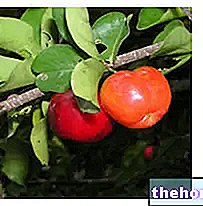
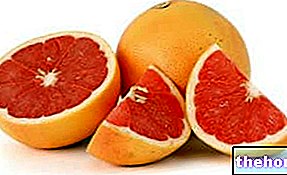
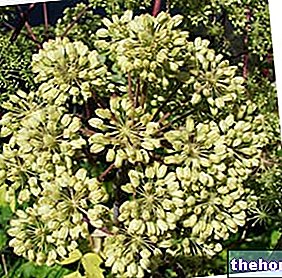

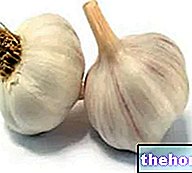
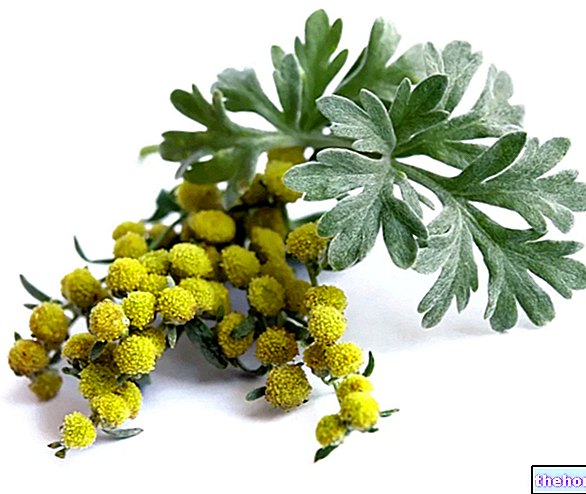









.jpg)











